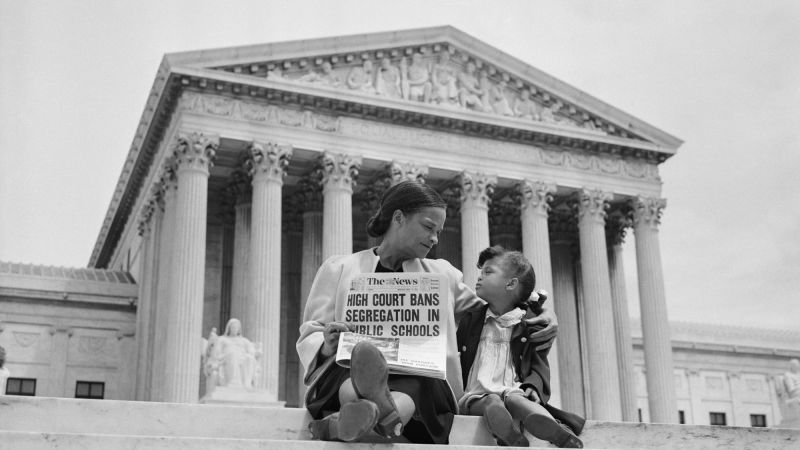Seventy years after the landmark Brown v. Board of Education decision, conservative groups are using the ruling to challenge race-related policies in schools across the United States. The decision required the integration of public schools and was a major victory for the civil rights movement. However, conservative groups are arguing that Brown mandates schools and government programs to be completely colorblind, which civil rights groups argue distorts the intent of the decision to address the nation’s history of racism.
Despite the Brown decision, many schools in the United States remain deeply segregated, and conservative groups have weaponized the ruling to discredit efforts towards school integration. The current Supreme Court has further fueled this debate with decisions ending affirmative action in college admissions, claiming that Brown stands for the elimination of considering race. However, the court’s liberal wing disagrees, stating that Brown recognized the necessity of racially integrated schools and stood against rolling back progress.
The debate over color-blind versus race-conscious policies has spilled over into challenges against workplace diversity programs, redistricting fights, and policies promoting student diversity without directly using race. Groups like Students for Fair Admissions have challenged the collection of racial data by institutions, citing Brown’s legacy as requiring a color-blind approach. However, civil rights groups argue that Brown sought to end discrimination based on race, not promote color blindness at the expense of diversity.
Many of these cases are still playing out in courts, with challenges to school admissions policies and efforts to promote diversity in education. The goal of Brown was to ensure equal treatment based on race and eliminate racial discrimination, not promote exclusion based on racial balancing. Civil rights groups argue that misinterpreting Brown undermines its history and meaning and goes against the fight to end racial discrimination perpetuated by the decision.
The legacy of Brown v. Board of Education remains important for civil rights in the United States, but the fight for true integration and equal opportunities for all students continues. The decision was a monumental win for civil rights, but as recent challenges in court show, there are still disagreements on how to interpret and apply the ruling in modern contexts. The increase in racial segregation in schools since 1988 highlights the ongoing struggle to achieve the goals of Brown and avoid further segregation fueled by misinterpretations of the ruling.
Overall, the debate over Brown v. Board of Education continues to shape discussions on race-related policies in schools and institutions across the country. Conservative groups are using the ruling to advocate for color-blind approaches, while civil rights groups argue for the importance of addressing the nation’s history of racism and promoting diversity. The Supreme Court’s role in interpreting Brown and subsequent decisions on affirmative action have reignited the conversation on integration, discrimination, and equality in education, highlighting the ongoing legacy and challenges of the historic decision.


